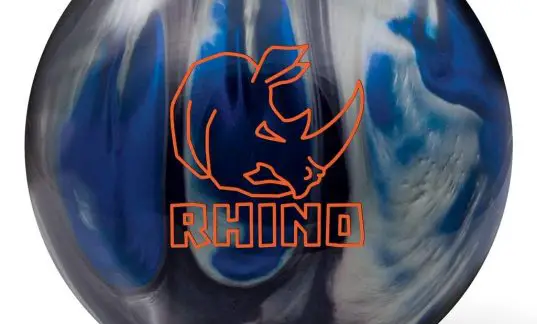One of the less-talked about (but extremely valuable) secrets in a good bowler’s arsenal is bowling finger tape. If you’re an advanced bowler who is at the bowling lanes multiple times a week, or you’re aspiring to get to that kind of level, bowling finger tape could very well be your best friend. Controlling a bowling ball for the entirety of your shot is tricky enough, but there are extraneous factors which can impact your game as time goes on which you may not even be aware of.
Bowling finger tape helps with some of those tricky situations which arise out of seemingly nowhere. For such a simple tool, it sure has a ton of impact on the game of those who use it and use it properly. With that being said, this article is here to give you an in-depth look at the importance of bowling finger tape for those who are serious about upping and maintaining their bowling game.
What Is The Purpose Of Bowling Tape?
Did you know that a bowler’s thumb can swell or shrink due to temperature changes, humidity or just repeated usage at the lanes? It’s true and it can be a dangerous proposition for your game (and health)! If your thumb shrinks, you could lose valuable gripping power which will alter your overall shot and could lead to injury if you overcompensate with your wrist or forearm. If it swells, the ball can stick and your hand release will be completely off, once again leading to your wrist or forearm taking the brunt of needless impact.
Bowling finger tape is used to reshape the gripping holes of your bowling ball, especially the thumb hole. This allows you to easily adjust your bowling ball grip to a consistent and comfortable pressure no matter what external factors impact the size of your fingers during play. Bowling finger tape has two groupings – the first being a textured white tape which enhances friction and grip, and the second having a smoother texture for easier release. Both are essential for changing your grip dynamic on the fly to suit your needs and any physiological changes which may occur.
One other key advantage to using bowling finger tape is that it helps you avoid skin irritation, especially in your thumb web, allowing you to focus on your game rather than itching and cracking skin. Your bowling shot, at its best, should be a finely-tuned machine. It requires utmost focus and the ability to repeat your successes and adjust from failures. Skin irritation detracts from focus and takes away from the pressure you can put on your grip, which makes the use of bowling finger tape essential for promoting consistency and efficiency in your game.
5 Steps On How To Use Bowling Tape
Before we get into the steps used to apply bowling finger tape to a bowling ball, there are a few particulars for you to know. When we refer to the front of the thumb hole, we’re talking about the side closest to the finger holes. References to the inside surface are speaking of the hole area between the thumb and finger holes on a bowling ball. The inside area is the gripping area for both the thumb holes and finger holes, while the outside area is where the knuckles are placed in the holes. With that out of the way, here’s 5 Steps On How To Use Bowling Tape:
- When you insert gripping area tape, it’s best to apply the center of tape to cover the pad of the thumb. To gauge placement, just know that the orientation should be in a direct line with your ring finger.
- There are multiple methods for placing tape in a bowling ball hole – be it a tape insertion tool, the tape backing, or a small instruments such as a pen knife. Regardless of what method you use, pre-folding or curving the tape is essential for easy insertion and adherence to the holes of the ball.
- Size a piece of textured bowling tape so it reaches the bottom of the thumb hole, with about a quarter inch of space between the tape and the outside edges of the hole. Place it on the inside area of the thumb hole.
- Using the same length standards as that of the textured bowling tape, size a piece of smooth bowling finger tape. Insert that piece in the back of the thumb hole in a mirrored placement to the textured tape. It should rest along your thumb’s knuckle to help with a more consistent and easy release.
- You can also add textured bowling tape directly along the knuckle side of your thumb, extending it from the thumbnail upward. This will protect your knuckle from skin irritation and keep the surface of your thumb consistent as it perspires. Starting from the thumbnail when you tape will help keep the tape from being pulled upward when you put your thumb in the ball.
How Much Tape Is Good On A Bowling Ball?
There isn’t a hard and fast rule for the amount of bowling finger tape you should use on a bowling ball. It’s more of a feeling out process which requires you to know your own shot and monitor your thumb’s release to ensure that everything is working smoothly. In short, you should put enough tape in the thumb hole so the ball doesn’t slip, but not too much where it impedes your thumb coming out of the hole at release.
One key to using bowling finger tape is to keep your tape fresh. Don’t hesitate to remove old bowling finger tape which can gum up your thumb hole with a sticky residue that’ll impact your shot negatively. Place fresh tape in the ball as often as you can to avoid such problems and promote consistency in your bowling shot.
Do Professional Bowlers Use The Thumb Hole?
There are a great deal of two-finger bowlers out there on the top Professional Bowlers Association tour and other minor tours around the United States and the world at large, eschewing use of the thumb hole in hopes of getting higher rev rates on their shot. Such a shot makes it harder to control straight-line spare shots, but professional bowlers who use this technique have years of practice fine-tuning their no-thumb shot to near-perfection.
Rule changes have been instituted by the USBC for no-thumb bowlers, banning the drilling of so-called balance holes into any two-finger bowler’s ball that also has an unused thumb hole. That’s because the unused thumb hole can also be used as a balance hole, eschewing its use as a gripping hole in favor of steadying one’s shot and control/violence combination.
Some professional bowlers still use the thumb hole, mind you. There’s also some interesting variations between thumb bowlers and no-thumb bowlers which utilized fingertip gripping that straddles the line between the two.
How Tight Should The Thumb Hole Be On A Bowling Ball?
Your thumb should never pop when you place it into a bowling ball or upon your shot release. There should never be a catch, something which impedes your thumb going in and out of the ball. As stated before, you should place enough bowling finger tape into a thumb hole to maximize your grip, but not too much as to cause any disturbance to your thumb coming out of the ball.
The tightness of your thumb hole will also vary on physiological changes to your thumb during play. The thumb hole will likely need to be tighter and more packed with tape when you thumb shrinks, and tape density will need to be sparser when your thumb swells. Keep your eye on things and be sure to stay mindful of changes to your grip during play. That will help you determine if you need to strip tape from your thumb hole or add more.
What Is The Thumb Slug In A Bowling Ball?
Thumb slugs are a solid piece of material, composed usually of urethane or vinyl, which some bowlers insert and have drilled into a bowling ball to create a custom-sized opening for their thumb. They’re a source of conjecture in the bowling world, as some bowlers avoid them like the plague and others use them for all bowling balls in their arsenal.
A thumb slug’s expressed purpose is to promote a consistency of feel for thumb insertion and release, and also allow for custom sanding of a thumb hole whereas the normal composition of a ball might resist such customization.
A bowling ball has three main layers – the cover stock, the weight block, and the core. All have differing densities and feelings to them. Such variance bothers some bowlers who prefer a smooth and unobstructed insertion and release for their bowling ball’s thumb hole. A thumb slug is a great custom tool for those bowlers to minimize the impact a bowling ball’s normal constitution has on the consistency and feel of their shots.
Closing Thoughts
While two-finger bowlers on the PBA Tour may not need it, bowling finger tape is an essential tool for the rest of the world’s intermediate and advanced bowlers. If you’re playing enough to notice any grip changes to your ball at any time, having bowling finger tape on you to adjust your thumb hole for consistency and comfort is crucial. With proper placement and insertion techniques, grip worries will be a thing of the past and you can steady your focus on improving other aspects of your bowling game.

